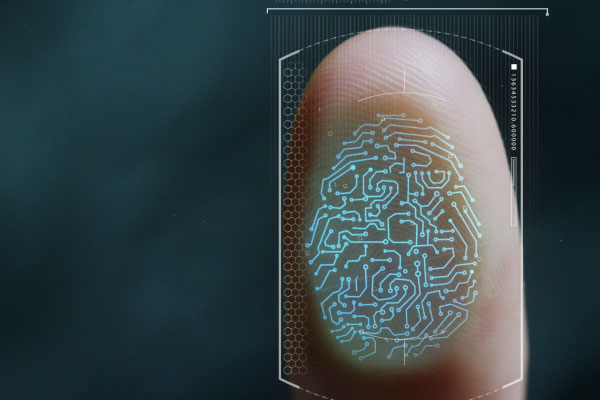
Biometric Security Solutions
It Solutions – Manchester and Stockport
Biometric security systems allow for greater levels of control over who is able access your site, and can allow for a unique security solution with only authorised personnel allowed access.
Biometric systems are easy to use and cannot be lost or stolen, which only heightens security. This is because it uses biological information to lock away data instead of regular security. Biometric information can include your fingerprint, retinal scan, facial recognation or voice patterns.
Because no two people are perfectly identical – not even identical twins share the same fingerprint – if data is locked away behind your unique biological information, it is near impossible to hack without getting access to your biological infomation first.
Due to how difficult it is to steal one’s biometric information, it’s one of the most secure methods of storing and locking away data.
An emerging technology is biometric encryption, which uses your biological information (e.g. your fingerprint) and generates a key from it. This key is used to encrypt the data, and so the data can only be rebuilt if the same fingerprint is used and thus the same key created to decrypt the data.

Fingerprint Scanning
The way that, say, a fingerprint scanner works is that once the fingerprint is scanned, the computer looks for “minutiae”. These are points in the fingerprint where the lines either split apart or stop.
The computer finds 16 of these unique features and effectively draws lines between them, measuring the distances and angles between them. This is stored in code form on the computer, and once the same fingerprint is placed again, the same features are looked for, identified and measured.
The same process is used for details in your retinal scan – unique features are identified, distances and angles are measured and data is converted into code.
Voice Recognition
Voice recognition works through converting sound to sound waves. The waves are stored by taking samples of the sound at frequent intervals and piecing them together into what the original sound wave looked like.
This is then filtered to remove background noise, the frequency of the waves is seperated into different “bands” and the volume is normalised or made equal. This is because all of this information can be variable between different times that people speak.
The waves are broken up into the different sounds for each “plosive consonant sounds”, which it uses to identify the words that the person has said into it. Then, the words that were spoken and the specific details of the sound waves can be cross referenced with the next time someone tries to access the data.

